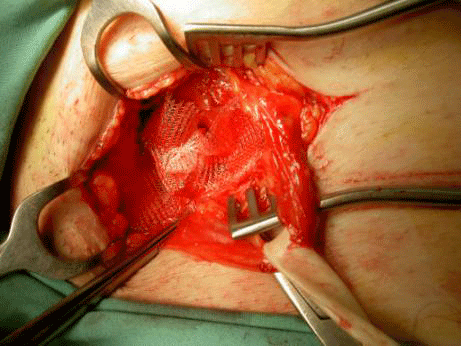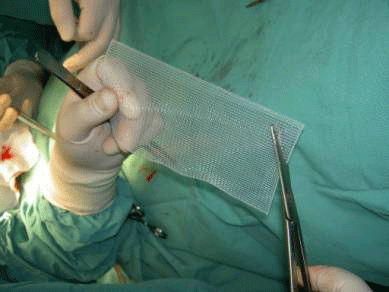|
The use of mesh in hernia repair, risk management and the advantages of day surgery |
||
|
Hernioplasty An example of hernioplasty is the placement of
non-absorbable synthetic mesh such as polypropylene mesh over the
posterior wall. This acts as a buttress and a trellis into which fibrous
and scar tissue grows. Prosthetics, i.e. the addition to the body of some
artificially prepared material are commonly used in surgery now. They
have many desirable features but limitations as well. For herniae they
must be strong and durable and pliable and should not cause a prolonged
or excessive inflammatory response. They should be inert and not
rejected. They should be sutured in place with similar materials so
friction and tension are reduced. With a mesh there is immediate strength and with
time a strong wall is formed. The repair is reinforced without having to
pull muscle and aponeurotic tissue tightly down onto the inguinal
ligament.
Sample of mesh used in ‘day surgery’ |

Mesh inserted Chronic infection and sinus formation unfortunately can occur but they are a much less frequent event with the modern material used.
|
|
